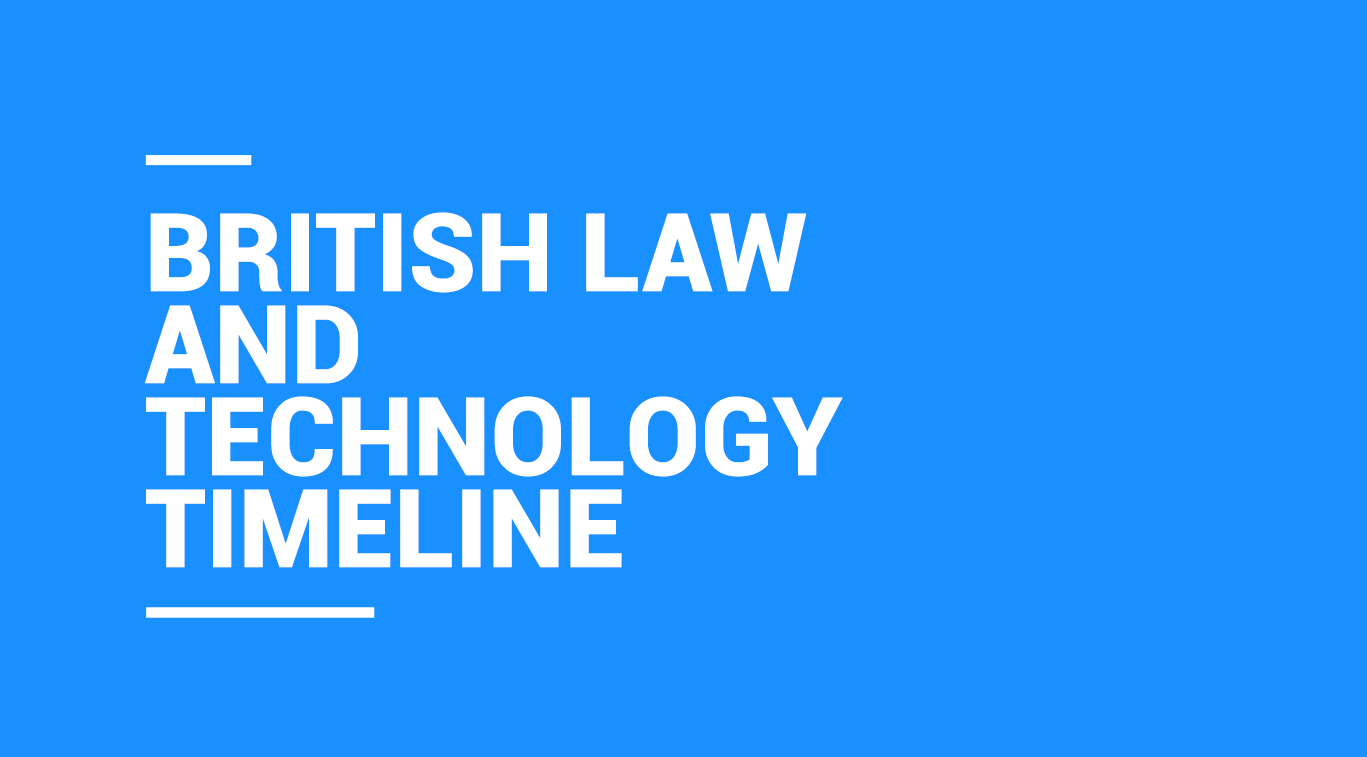British Law and Technology Timeline

Written by Fatima Freifer
Blogger

Legal Tech, or the segment of the legal industry that uses cutting-edge technologies, has completely transformed the way attorneys and law professionals work. It has generated new prospects to digitally renovate the legal industry and meet the expectations of tech-savvy clients. Surprisingly, this has not been limited to the top legal organisations; small legal teams and start-ups have also recognised and invested in the opportunity.
Technology has a massive impact on every industry, particularly the legal world. It has improved the attorney-client relationship in many ways in the twenty-first century. Technology has unquestionably advanced in the direction of digital transformation.
It was not long ago that most lawyers and law firms relied on typewriters and telephones to conduct business. Other types of businesses used technology that was essentially identical to the technology used by law firms. If you walked into a law firm, a utility or an advertising agency, you would find that everyone used the same technology to do very different things. [1]
Dicitation Machine
Even if their assistant was not present, lawyers could record information on dictation machines and have that assistant transcribe the information later. It was both a time-saving device and a more reliable method of recording information that the lawyer needed transcribed. Unfortunately, the first dictation machines were costly, cumbersome and frequently broke down. Today, however, any lawyer with a smartphone can quickly and easily dictate information and have it immediately transcribed with a high degree of accuracy.
Personal Computer
Firms that purchased PCs early faced some difficult challenges. Because PCs and printers were expensive, allocating the hardware could be a contentious issue. Another issue was support: Lawyers required assistance and training. Firms established help desks, staffing them with those who expressed an interest in a PC facility.
The PC opened up an infinite number of possibilities for “applications.” Some were designed with lawyers in mind, such as deposition searching or document assembly (for automatically creating documents). Others were developed for broader markets and adopted by lawyers, such as outliners for deposition preparation, personal information managers for contact and calendar management and databases for indexing discovery documents.[3]
Advanced Case Management Systems
Early case management systems at the turn of the millennium were useful but flawed because they were not scalable and, in many cases, did not address all of a law firm’s critical needs. Most were only available as local downloads and replaced, rather than integrated, office productivity software such as Microsoft Word. Depending on the case management software purchased, a law firm may have had to patch together multiple systems to meet all of their critical business needs.
However, beginning in the late 2000s, case management systems were completely revamped, leveraging many of today’s modern tech tools in ways that help lawyers get the information they need when they need it and manage client matters easily, no matter where they are.
Many systems, however, have inherent design flaws that make them vulnerable to future technological evolution (even today). Cloud-only systems rely on consistent Internet access, contact-based systems (as opposed to matter-based systems) rely on remembering client information, and basic case management packages still rely on attorneys finding public forms and filling them out repeatedly.
Emerging digital technologies in the modern day
The law of technology is a developing area of the law and is always evolving. In the past few years, there have been many new laws and changes to existing laws that have been introduced.
Emerging digital technologies have created new opportunities while also posing new legal challenges, particularly in the areas of intellectual property, trademarks, patents, royalties and licensing. The development of new digital communication technologies and media, for example, has given rise to novel issues concerning the digital reproduction and distribution of copyrighted works. Affected industries and public interest advocacy groups have taken (and continue to take) action to craft appropriate safeguards and provide legal certainty to copyright holders, digital technology companies, the public and other interested parties.
Business Intelligence
Automation enables law firms and professionals to change their working habits and become more efficient. Because of rising customer expectations, the legal sector’s latest pace of digital transformation must keep up with the times and trends. The emerging legal technology stack offers a variety of law-based solutions, including e-billing, workflow automation, dashboard, e-signature and general compliance.
These new digital economy sectors raise regulatory and policy concerns about taxes, data collection, privacy, Internet governance, regulatory jurisdiction and intellectual property.
Conclusion
Inferring from current trends, it is clear that firms will continue to work on improving their ability to work whenever and wherever they want, as well as collaborate within the firm and with third parties. With the control of the lawyer’s computer desktop and the increasing size of large firms, there is renewed interest in using technology to automate back office functions such as opening new matters, resolving conflicts and paying expenses.
References
[1] Legal Technology Timeline, Slideshare, https://www.slideshare.net/LLMinc/infographic-legal-technology-timeline
[2] Law and Technology Timeline https://www.eff.org/files/2019/11/04/tc_law_and_technology_timeline.pdf
[3] A 60-Year Timeline of Events Technology Innovation, Corbin Ball, CMP, CSP, 2019 https://www.corbinball.com/article/29-futurism/263-60yeareventtechtimeline








